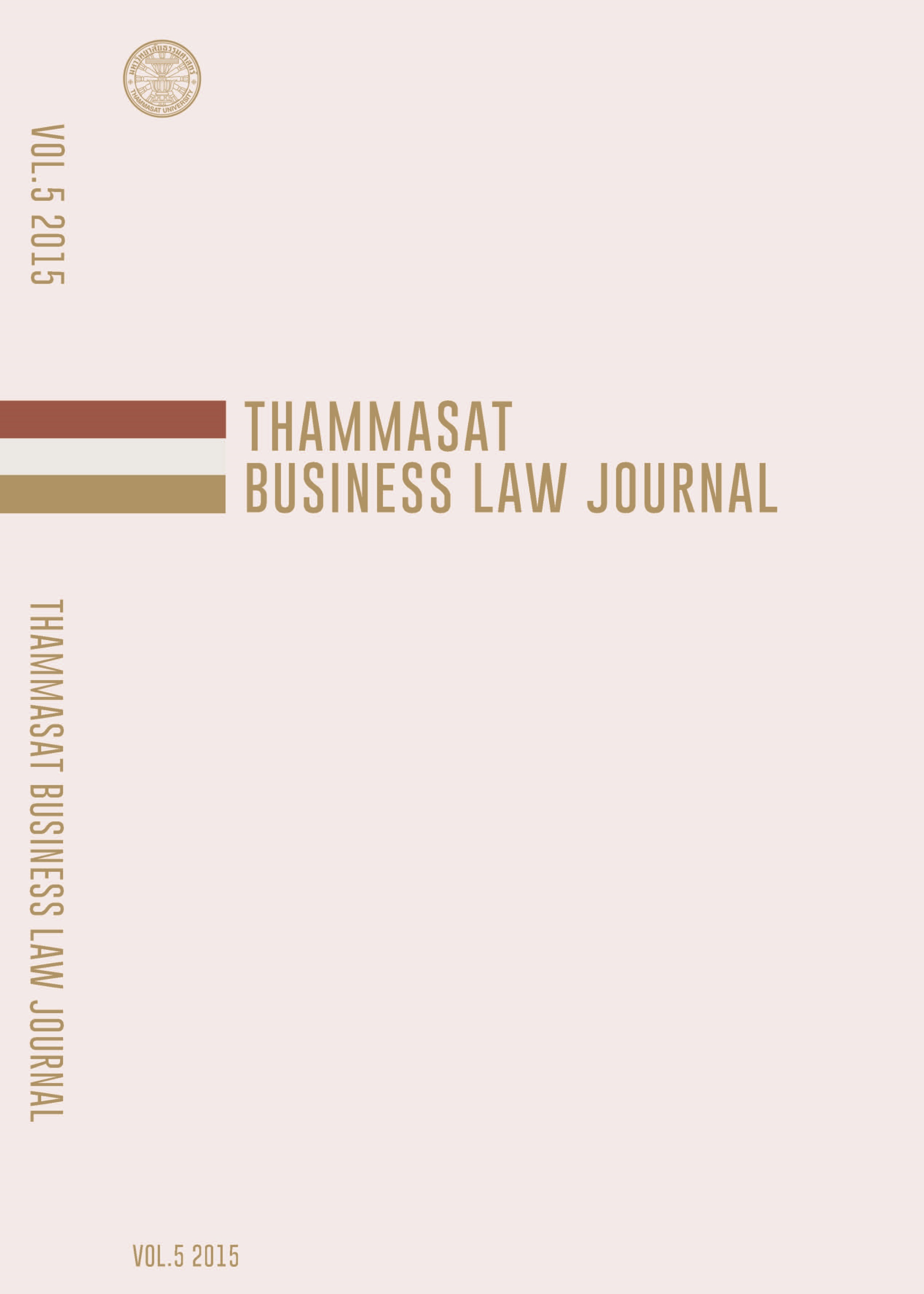LEGAL MEASURES FOR CONTROLLING DANGEROUS SUBSTANCES IN TEXTILE AND GARMENT PRODUCTS: A CASE STUDY OF AROMATIC AMINES
Main Article Content
Abstract
Aromatic amines are widely used for preparing and manufacturing of dyes using in textile and garment businesses. After the last process of manufacturing of textile and garment products, aromatic amines can be remained as a residue in finished products and may be migrated and absorbed into a human body through the skin or mouth. The International Agency for Research on Cancer (IARC) of the World Health Organization (WHO) has classified some aromatic amines as known human carcinogens that are capable of causing cancer. Epidemiological studies have shown that the exposure to aromatic amines is strongly associated with the occurrence of bladder cancer and the abnormality of bladder such as a spectrum of lesions of the epithelium of the urinary bladder, dysuria, and painful in the lower abdomen. Moreover, aromatic amines have also been reported to exert a high level of acute and chronic toxicity causing the fatality.
At present, many countries have placed important on this matter and have restricted and controlled the use of aromatic amines by means of legal measures. However, the existing laws of Thailand are not sufficient to control the use of aromatic amines. Thus, consumers may be exposed to aromatic amines and harmed by them. This thesis mainly focuses on the legal measures for controlling the use of aromatic amines in foreign countries including the European Union, the United States of America and the People’s Republic of China in order to propose the appropriate and effective legal measures for protecting Thai consumers from aromatic amines causing cancer contaminating in textile and garment products.
By studying and investigating the legal measures for controlling aromatic amines in those foreign countries and relating Thai laws, the outcome illustrates that the proposed appropriate regime is designating the Thai Industrial Standard for Fabrics: Safety from Harmful Dyestuffs and Chemical Substances or TIS 2231-2550 (2007) and the Thai Industrial Standard for Garments: Safety from Harmful Dyestuffs and Chemical Substances or TIS 2346-2550 (2007) to be the industrial standards which are required by a Royal Decree to manufacture fabric and garment products in conformity with the requirements of the TIS 2231-2550 (2007) and TIS 2346-2550 (2007) according to Section 17 of the Industrial Standards Act B.E. 2511 (1968). Thus, Thailand can prevent importation of the products which do not conform to the TIS 2231-2550 (2007) and the TIS 2346-2550 (2007). By this means, the consumers in Thailand will be protected.
Article Details
References
(IARC), The International Agency for Research on Cancer. “IARC Monographs on the Evaluation of Carcinogenic Risk of Chemicals to Man.” Volume 29, (1974).
(IARC), The International Agency for Research on Cancer. “IARC Monographs on the Evaluation of Carcinogenic Risk of Chemicals to Man.” Volume 77, (1974).
(OECD), The Organization for Economic Co-operation and Development. “Case Study 10: Release from the Use Phase of Textile and Leather Products.” Resource Compendium of PRTR Release Estimation Techniques Part 4: Summary of Techniques for Releases from Products.
Aboynamedsue, “Ecodictionary: Dyes (Low Impact).”
Commission, The Australian Competition and Consumer. “Azo Dyes.”
Commission, The Australian Competition and Consumer. “Options to LimitHazardous Aromatic Amines in Clothing, Textiles and Leather Articles.”
Economy, The Policy Research Center for Environment and. “Impacts of Environmental Standards and Requirements in Eu Countries on China’s Textile Industry,” The 3rd Meeting of the 2nd Phase of CCICED (1999).
Howstuffworks?, "How Is Fabric Created? “The Manufacturing Process of Fabric.”
Learner, Textile, “Introduction of Textile Finishing Process.”
Nilprapunt, Pakorn. “Product Recall Measure: Australia and the United States.”
US, National Library of Medicine National Institutes of Health. “Monocyclic Aromatic Amines as Potential Human Carcinogens: Old is New Again.”


